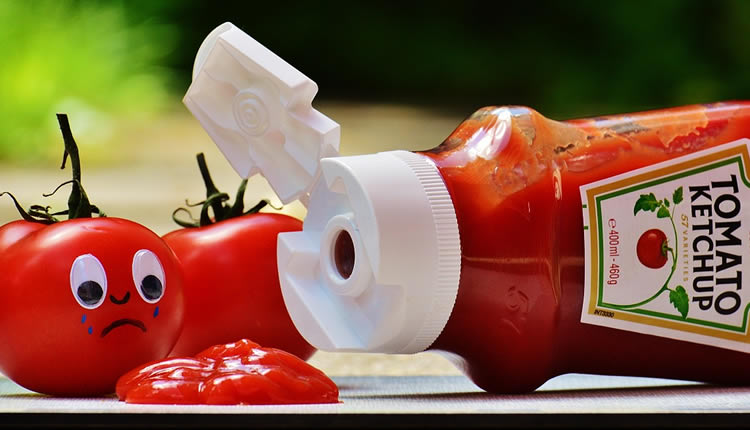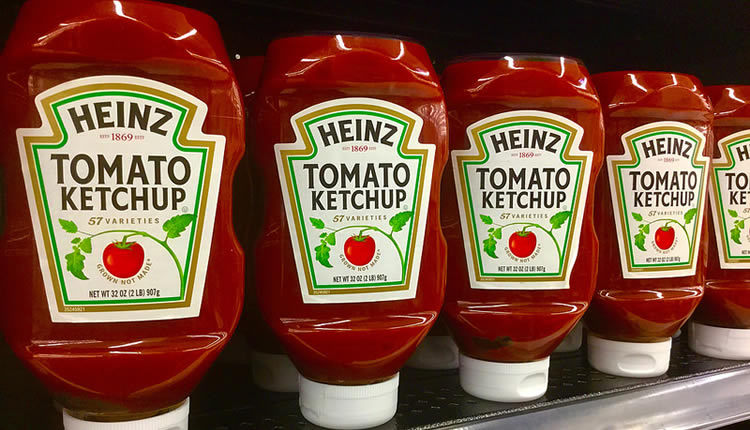What Marketers Can Learn From A Ketchup Bottle

Everyone wants to be in markets where growth is explosive and product innovation constant. Under those conditions, a good marketer can differentiate the company’s products and gain a competitive edge. Unfortunately, most of us are in markets that are more mature and where competitive products are quite similar to our own. Pricing leverage is minimal, and margins are constantly under pressure. Innovation often consists of minor product tweaks that don’t have much impact.
How do you break out in a market like this and create something that will make a difference?
There are at least two lessons the lowly ketchup bottle can teach you about innovation. #Neuromarketing Share on XOne answer can be found in, of all places, the lowly ketchup bottle.
Ketchup as Commodity
At the turn of the millennium, ketchup had been around for 150 years. It had seemingly become a commoditized condiment. Heinz was the leader and had strong brand recognition, but was vulnerable to competition with lower prices or catchier marketing.
According to innovation expert Amy Radin, author of The Change Maker’s Playbook, Heinz upended the staid ketchup market with an idea that was far from a breakthrough: the upside-down bottle. Heinz didn’t invent the concept or technology. Shampoo-makers and others were already using the inverted design. In my conversation with Radin, she pointed out why ketchup offers such an important lesson to marketers:
Ketchup is something everybody can understand. It’s not a big technology. We all have a bottle of ketchup in our refrigerator and we’ve all experienced that problem.
Ketchup’s Problem
Before the upside-down squeeze bottle, the classic, iconic ketchup bottle posed issues for both the consumer and the brand. Diners were often perplexed by the difficulty of getting the thick condiment out of the bottle. Sometimes, they resorted to sticking a knife in the bottle, resulting in a messy utensil coated in red goop up to the handle. Pounding on the bottom of the bottle sometimes worked. But, at other times, it might produce a flying burst of ketchup that could land anywhere. And, forget about getting the last bit of ketchup out of the bottle – nobody could wait that long.
Marketing the Problem Away
Heinz tried to turn this bug into a feature. In 1978, they ran a television ad promoting the idea that good things are worth waiting for. Carly Simon’s song “Anticipation” was the sound track. Perhaps that placated some consumers, but it didn’t solve the bigger problem. If your business is based on people consuming your product, a huge struggle to get your product out of its container is bad for business.
Even if the slow pour problem wasn’t resolved by this approach, one has to admire Heinz’s creative rewriting of the narrative for getting ketchup out of the bottle.
Finally, a Real Solution
Eventually, Heinz found a way to take the friction out of ketchup consumption. The inverted bottle let people start applying the condiment without effort and minimized frustration when the bottle was nearly empty. From the brand’s standpoint, the benefit went beyond ease of use. Now, people could consume more ketchup because it came out so quickly and easily.
Within a year of introducing the inverted bottle, Heinz was growing three times as quickly as its competition. In a sleepy market, that’s a big win. In the ensuing years, their ketchup sales grew at 25% per year, most of that growth taken from competitors.

This begs a question… How many ketchup marketers and executives poured shampoo from an inverted bottle as they showered before, finally, one slapped a soapy forehead and said, “Eureka! This thing could work for ketchup!”
Even that insight almost wasn’t enough. Reportedly, Heinz dragged its feet on introducing the inverted bottle until they learned that arch-rival Hunt’s was working on a similar concept.)
Lessons for Marketers
There are at least two lessons here for marketers. First, innovative product ideas don’t always come from big market research. I’m pretty sure that no ketchup customer would have said what they really wanted was an upside-down bottle. They might have mentioned the difficult dispensing issue, but that knowledge was already well-established. Slow pouring wasn’t a problem, it was a benefit! Or, so the advertising suggested.
Here, the innovation was as simple as seeing how what another industry was doing could be applied to one’s own product. As Radin put it,
Those upside down bottles were out there, they were in the shampoo category. That’s a great example of a way to discover innovations—look in other sectors for analogous problems.
She offered the example of the financial services industry studying ideas from health care. While very different businesses, both involve important consumer services. Presumably, health care brands could also look to the financial services for ideas to repurpose.
Second, Heinz took a high-friction experience that was time-consuming, high-effort, and occasionally risky (at least to white shirts and tablecloths) and made it easy. Very easy. Their customers, and their competitor’s customers, responded immediately.
Consciously or unconsciously, humans will seek the path of least effort. You’ll win if your product is that path.
Want to grow in a low-growth market? Make things easier for your customers than the competition does! #Neuromarketing #friction Share on X